The Marketer’s Guide to Win-Back Campaigns in 2023
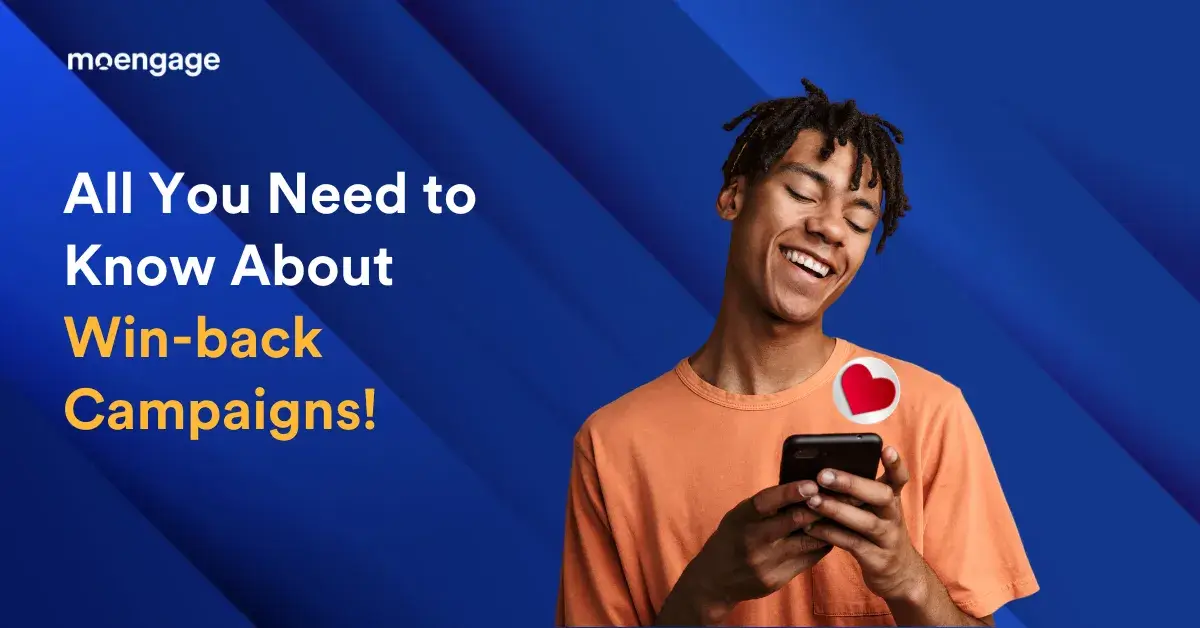
If you think about it, marketing and romantic relationships are quite similar. They all start with this lovestruck feeling where you just cannot get enough of the other. There’s constant back and forth, with every interaction giving a head rush. Soon enough, something else comes along, and this love fizzles out. Your messages are left on read—or worse, they go unread.
And then you go from lovers to strangers. We cannot offer advice on rekindling the romance, but we can tell you how to run a win-back campaign that can help in getting your customer’s engagement and attention back.
Here’s your detailed guide on win-back email campaigns!
What is a Win-Back Campaign?
A win-back campaign is a marketing strategy that helps you re-engage lost customers. You may also use them as an intervening strategy for customers on the cusp of being lost. The objective of a win-back campaign is to reignite customer interest, encourage interactions, and prevent customer churn.
Marketers can run win-back campaigns across different channels: push notifications, email, text messages, etc. However, in this blog, we are focusing on win-back email campaigns.
Types of Win-Back Campaign Strategies
As mentioned previously, win-back campaigns can help with inactive subscribers or lost customers. Based on their status and your typical sales cycle, you can use any of the following win-back strategies:
1. Gentle Reminders
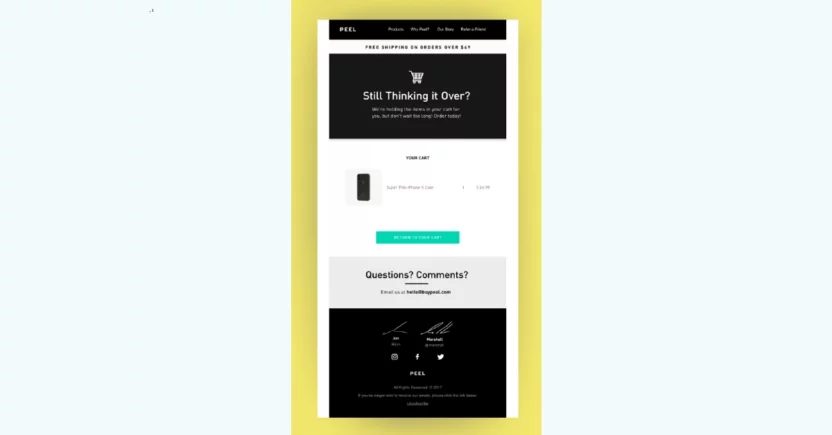
In this win-back campaign, you remind customers that they might want to revisit their cart in which they had added a few items and left. Such a friendly reminder will make the customer feel seen and valued.
This strategy works well for brands as it lowers the risk of customers turning dormant.
2. Motivators
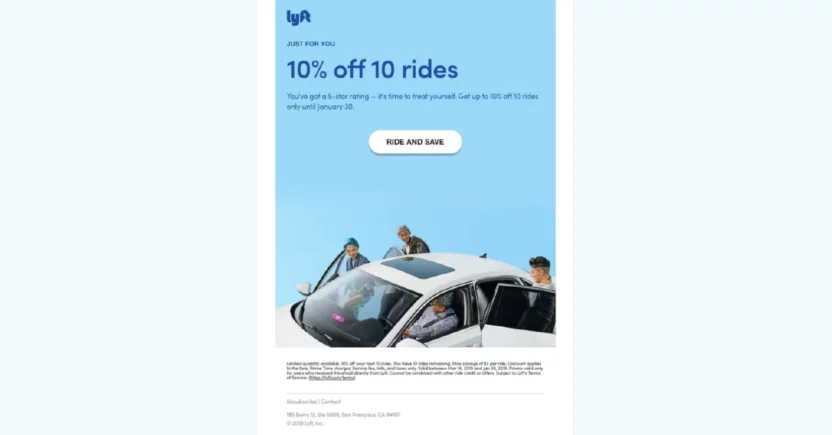
True to their names, motivator win-back strategies offer a small incentive (say, a discount code) for performing a certain action. Such a little win-back approach instills loyalty amongst infrequent or one-off customers.
So, use this engagement email for customers at a medium risk of turning dormant. Alternatively, you may even use an incentive email as a gentle nudge to convert new customers.
3. Bumper Incentives
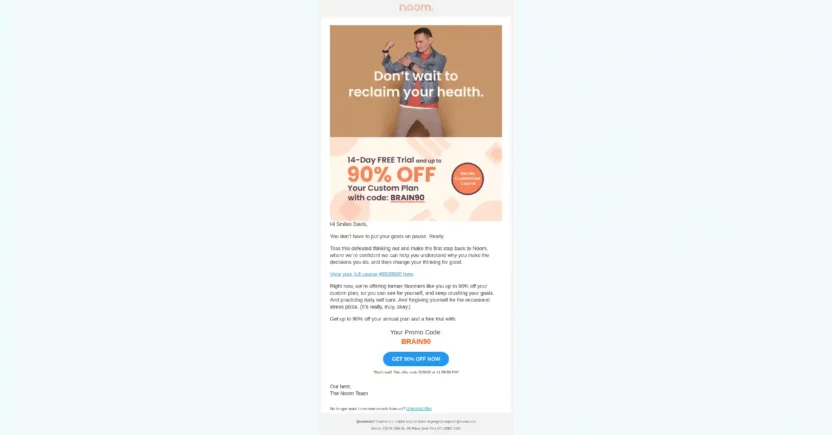
This win-back campaign is an exaggerated version of the motivator. It is when you bring the big guns out with an impossible-to-resist offer for customers that are at a high risk of dormancy – those who have already lost interest in your offerings.
And to win them back, you re-engage them with a major incentive that falls outside your typical repertoire – say the next month’s subscription box at a 50% discount!
4. Feedback/Survey
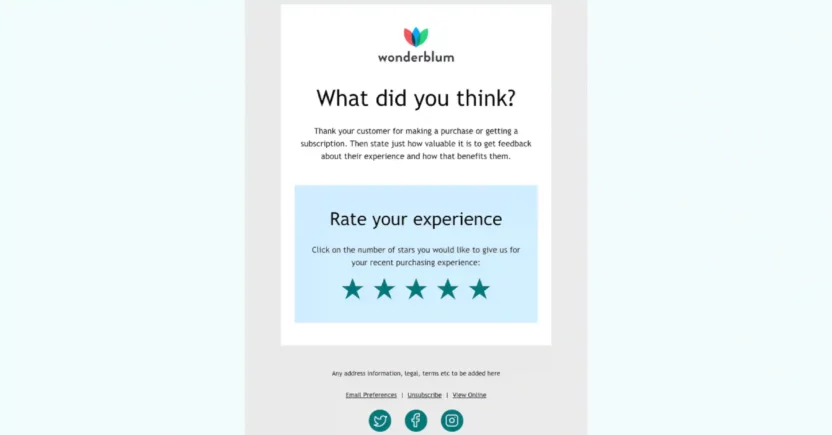
Not all customers stick around – and that’s okay. However, if you notice high volumes of churn, then it could be a symptom of an underlying problem.
This win-back campaign aimed at dormant customers can help you understand why you have lost them. Surveys and feedback forms allow lapsed customers to voice their experiences.
5. The Break-Up
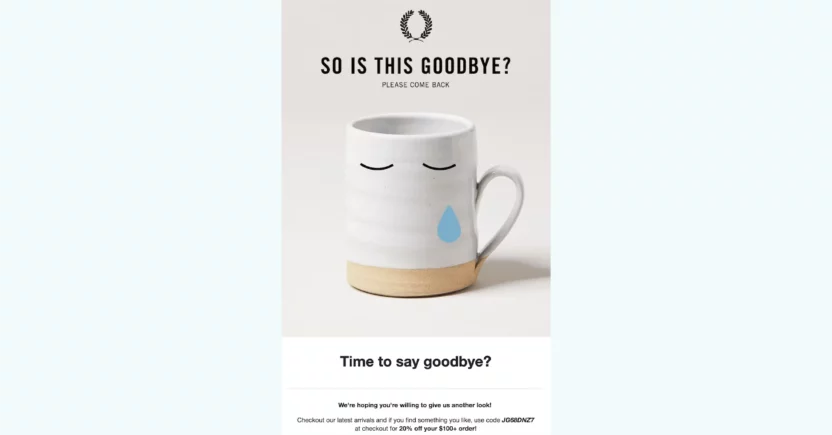
Are your regular win-back campaigns falling on deaf ears? Then it’s probably best to ask the inactive subscriber or dormant customer whether they are still interested in what you have to offer.
They’ve probably forgotten all about you, so use this opportunity as a last-ditch effort to win them back. If you still get no response, respect their space and let them go. For all you know, cleansing your mailing list this way will only improve your metrics.
Why Should Businesses Bother About Win-Back Campaigns?
So far, we’ve talked about what win-back campaigns are and the various win-back email types. But is such a campaign worth your time and so much effort?
Totally!
Here’s why you should care about win-back emails:
- It costs 5 to 25x to acquire new customers than to retain an existing customer. Win-back campaigns cut down on acquisition costs by increasing retention.
- Your top 10% of customers spend 2x more per order than your bottom 90%, while the top 1% of repeat customers have an average order value that is 2.5x more per order than the bottom 99%. Hence, re-engagement emails will attract more revenue in the form of repeat purchases.
- Along the above lines, it is easier to re-convert existing customers – almost by 50%! As a result, a win-back email campaign will offer a higher ROI and prove to be more cost-effective than your regular marketing campaigns.
- Interestingly, 45% of lapsed customers and inactive subscribers read win-back emails. Such a promising open rate indicates that there’s still hope for you!
With such impressive advantages in the pipeline, a win-back strategy should be a part of a business’ Plan B when customers are ready to pull the kill switch on them.
Anatomy of a Winning Win-Back Email Campaign
A typical customer win-back email contains the following elements:
1. Segmented List of Lapsed Customers
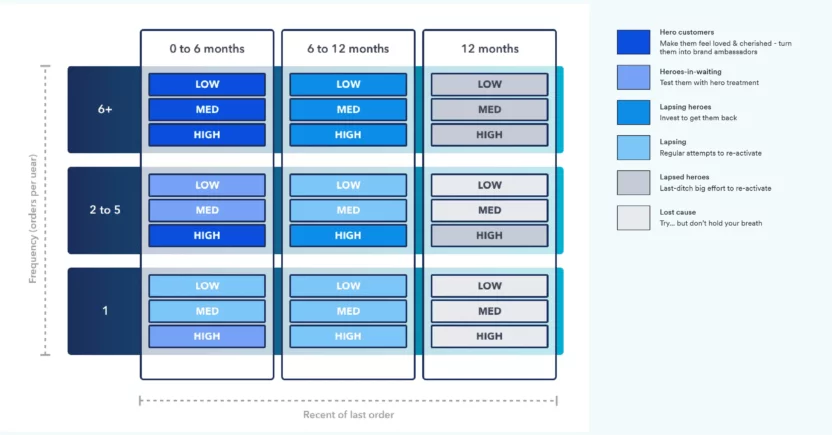
You need to know your lapsed customers in the first place to win them back!
As such, your journey begins by identifying these inactive customers.
Unfortunately, there is no magic formula that can pinpoint you toward the target cohort. Your definition of a lapsed customer may vary depending on the industry, product or service, customer longevity, sales cycle, conversion rate, seasonality, monetization model, etc.
Regardless, you will have parameters like period of inactivity, customer lifecycle value, and historic data on lapsed vs. repeat customers to create this segment. Analyze your existing data to create benchmarks for your marketing team.
For instance, inactive subscribers with an age of 3 to 4 months may not count as lapsed customers for enterprise SaaS products, especially since they have a longer decision-making process. On the other hand, even a month of inactivity may spell doom for OTT platforms offering monthly subscriptions.
2. Data on Lapsed Customers
By this point, you may have a broad idea of the different customer cohorts corresponding to the lapsed customer status. Now is when you flesh out their personas and discover commonalities between the different lapsed customer groups to identify the root cause.
You can also run re-engagement campaigns of the survey and feedback kind, to gain further insight into why customers decided to take a break or switch to a competitor. Deep dive into this data to identify the granular themes leading to customer churn.
Someone may have a problem with a particular product/service, while others may need to be more fond of your business policies.
Once you have this data, you will also need data on repeat customers. Such information acts as the control environment for your hypotheses. So, use it as a reference to identify what separates the disengaged customers from your loyal and repeat customers.
3. A Compelling Subject Line
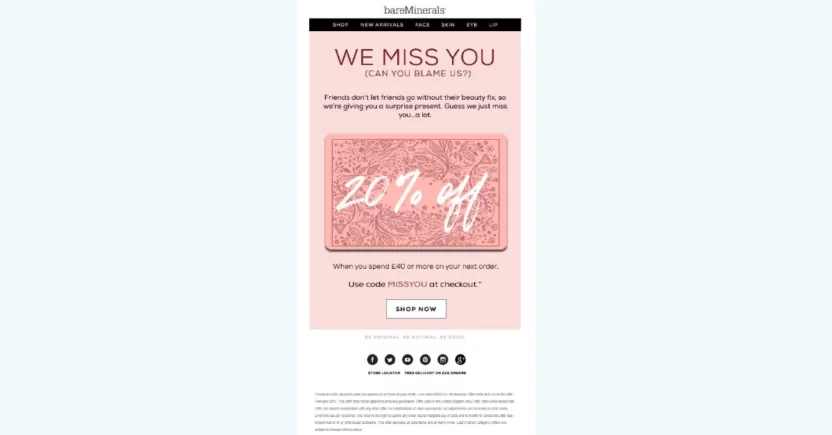
Your subject lines are the magnet for a customer’s attention. They are the introduction of your re-engagement email. And seeing how first impressions matter, you need to make a solid one with a compelling subject line that attracts clicks.
You may have come across win-back email campaigns using humane brand voice in their subject lines such as “We Miss You”, “Did We Get Anything Wrong?”, “It Has Been a While”, etc. Addressing the receiver directly helps brands establish an individualized connection with the past customer.
Alternatively, some businesses will prefer to play on the emotion of FOMO in their subject lines to create a sense of urgency. Their subject lines would speak along the lines of “Our most viral product – only XX items left in stock.”
You can even front-load value in your win-back email by weaving in the key offering right into the subject. For instance, your subject line can read “X% discount code inside” for motivator and bumper incentive and immediate customer engagement.
4. A Reminder of Your Value Proposition
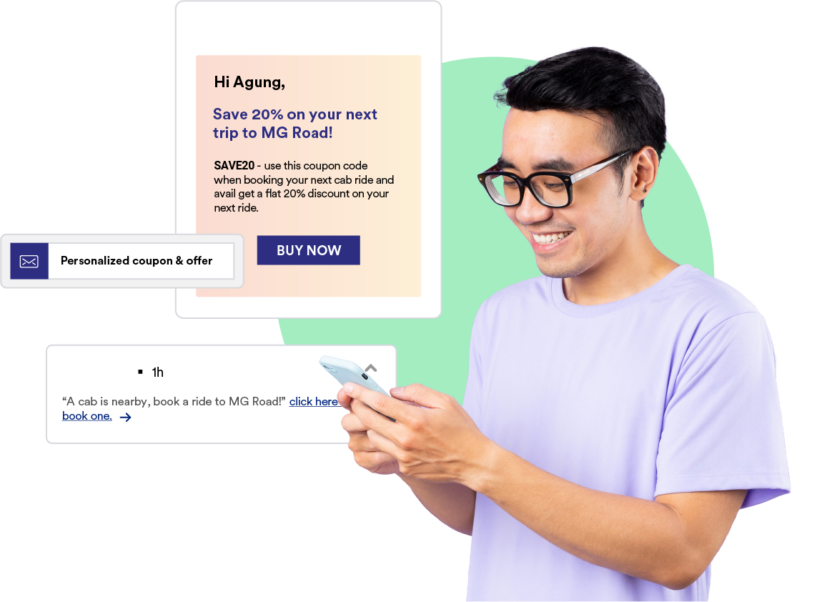
Now that you’ve nailed the subject line, what next?
You focus on the body of your win-back email. Your messaging must resonate with your dormant or inactive customer’s requirements to help nudge them back into the buyer’s cycle.
You already have insights to gain context on your inactive customer segments. Now all you need is a win-back email campaign strategy that matches the demand or expectation gap.
For instance, consider offering discount codes to your price-sensitive customers who abandoned their carts. Or publicize your new product/service offerings that align with the changing customers’ needs. You can run a flash sale to win back impulsive inactive customers. Or send a follow-up email that educates them on how to use the product or connect with the customer support team.
5. Layer of Personalization
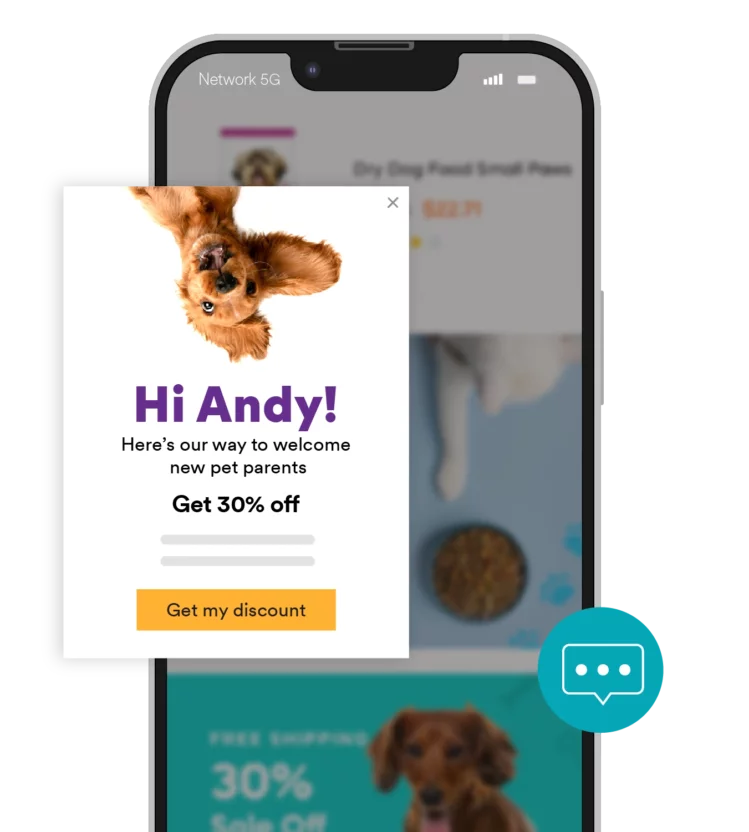
It is no secret that a personalized email campaign performs better than its generic counterparts. They deliver 6x higher transaction rates. Personalized subject lines have 26% higher chances of opening. And so, your win-back email should also carry a flavor of personalization. There are several ways in which you can add a touch of personalization to your win-back email. It could be your subject line, the email content, a personalized customer loyalty program, or even the CTA (more on this later) – the options are endless.
Find ways to personalize your win-back campaign, and your customers will love your brand.
6. A Powerful CTA
While it would be ideal to let customers decide how they react to your win-back email, the right call-to-action (CTAs) will give them a much-needed gentle nudge.
In fact, it is the missing link between the inactive users’ current state and the win-back email campaign’s outcome. Your CTA could be a personalized product recommendation, a link to a newly published blog, a clickable discount code – anything to convert the lost customer.
7. Continuous Improvement with A/B Testing
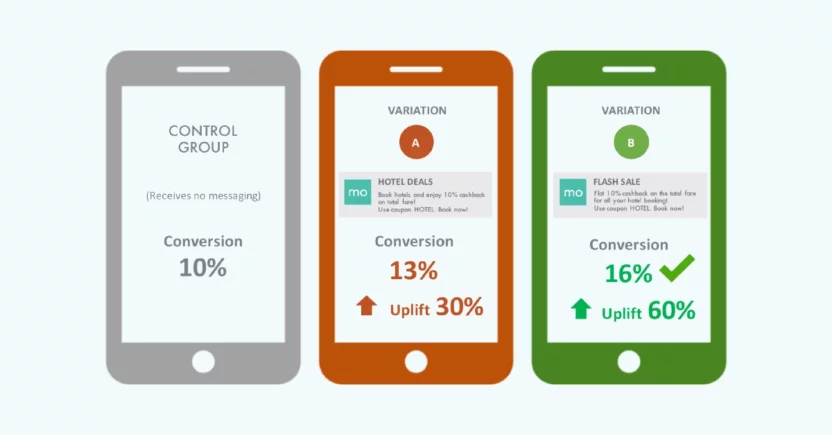
When you A/B test subsets of your win-back campaigns, you have a clearer picture of what is working and what is not.
A/B testing also enables you to identify specific improvements – subject line, placement of the CTA button, link placement, the body of the content, time to send the email, etc. – and continue improving your campaigns.
Best Practices to Improve Your Win-Back Campaign Strategy
1. Get to the Point
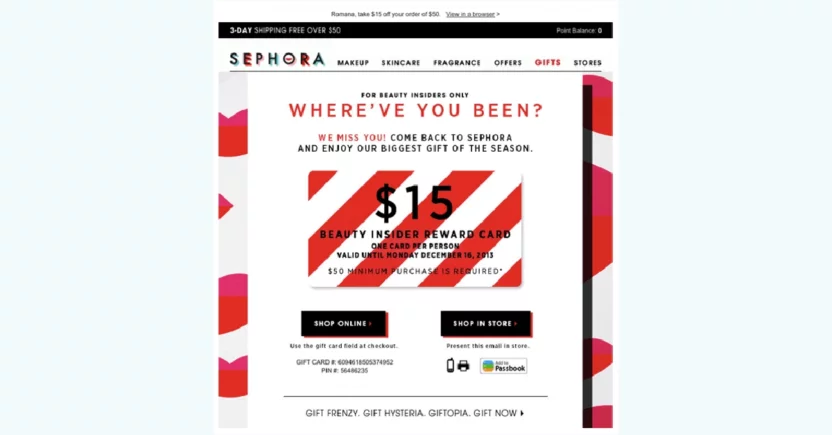
Keep it simple while crafting your win-back email subject lines and body. Your win-back email must be short and impactful.
2. Make ‘Em Smile
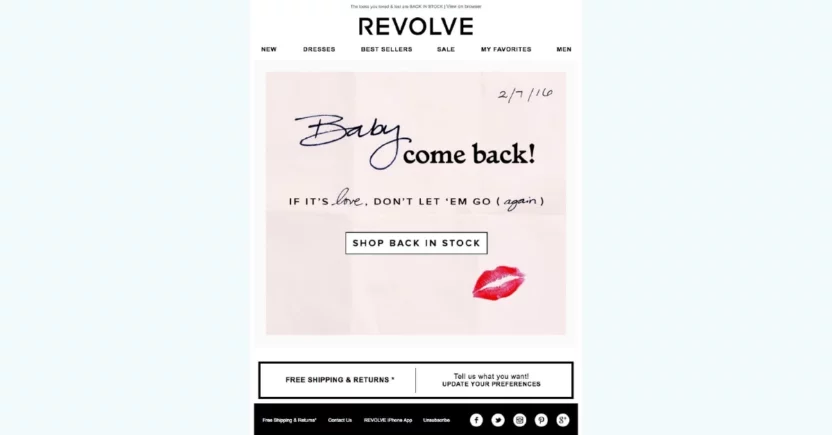
If your brand voice permits, sprinkle in a touch of humor in your win-back email. It adds personality to your email and builds a human connection.
3. Personalize Everything
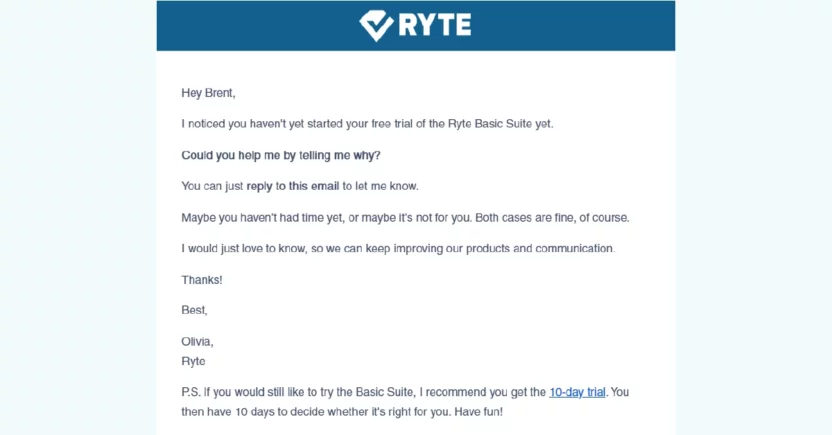
Personalize the components of the win-back email and the incentives based on customer requirements, interests, and preferences. Your audiences will open and interact with your win-back email only when you have something of value.
4. Try and Try Again
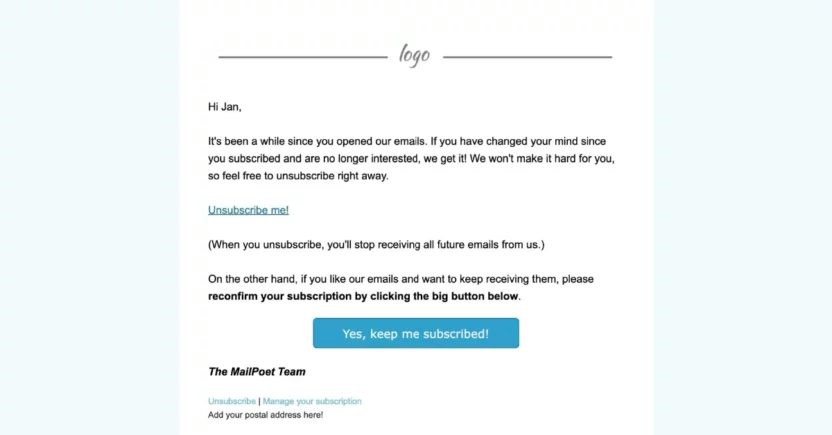
Experiment with more than one re-engagement email and try to spread their delivery across different times. However, make sure that is does not hamper the quality of customer experience.
5. Include Social Proofs
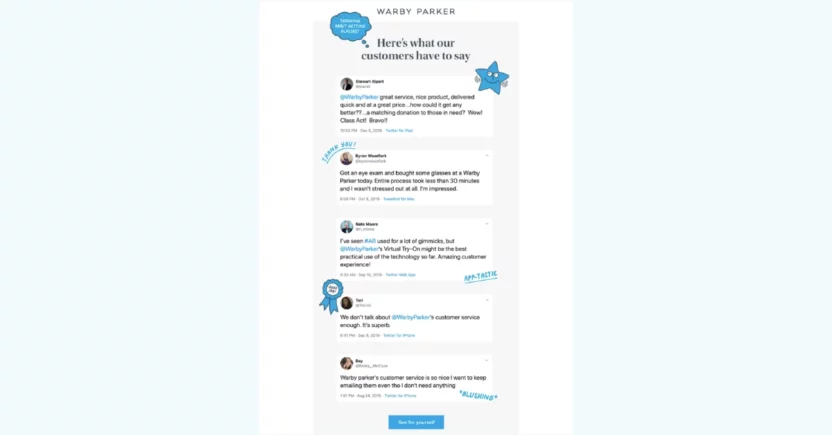
Incorporate social proof and user-generated content (UGC) from brand advocates to gain credibility and authenticity..
6. Segment Your Customers
Prioritize your customer segments based on past behavior and actions. For instance, inactive but very high-purchase-value customers should gain precedence over inactive but low-purchase-value customers.
7. Test and Measure
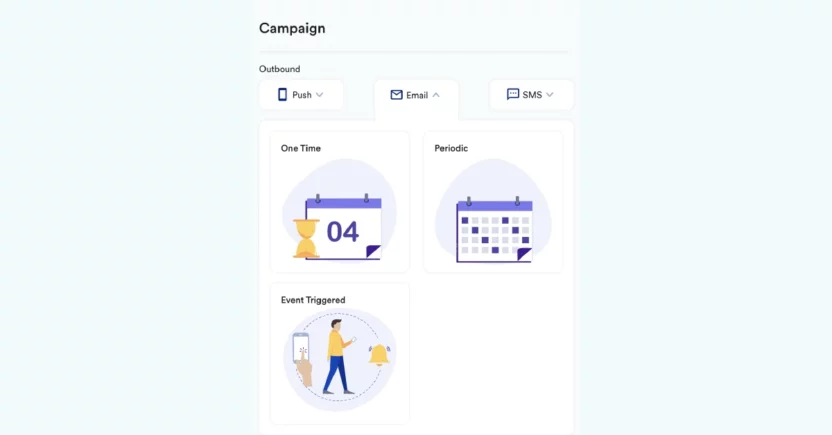
Perform A/B testing to identify the best times, subject lines, email contents, and other variables that can improve the effectiveness of your win-back email campaign.
Successful Win-Back Campaign Examples
Here are a few win-back email examples to inspire you:
1. Reminders
Reminder emails from Monki remind audiences that they are enrolled in their mailing list. They send polite and gentle reminders to keep the consumer happy and prevent their brand from going out of sight and out of mind.
They also offer nifty incentives in the form of a discount code. With such an offering, who wouldn’t be tempted to make the purchase?
2. Customer Feedback Email
The proven brand sets a gold standard for customer feedback email. The subject line is clear and unambiguous; it makes the receiver feel like a part of the solution.
At the same time, multiple choices ensure that even the busiest of customers respond to the email and share why they stopped purchasing from Proven. There is also a custom field, “Other,” where the customer can expand on their experience.
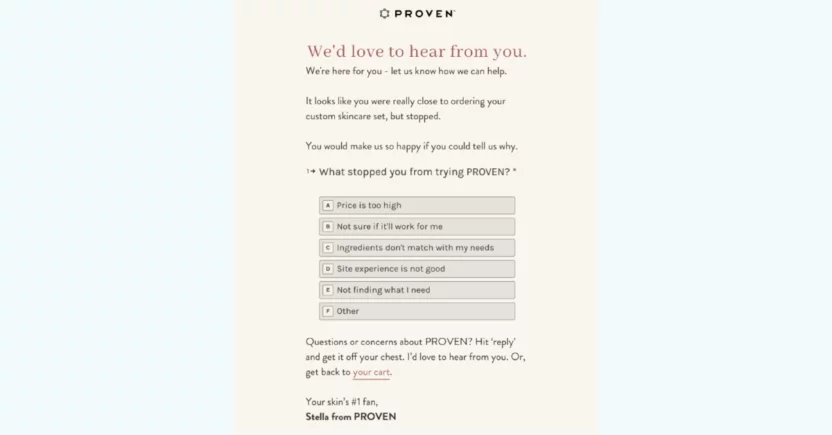
3. Last Call
A last-call win-back email is the final effort to re-engage customers. True to its name, it is a last call for customers before you remove their details from your database.
Hair care brand Paul Mitchell nails it with an emotional email showcasing their products one last time. While such emails get typically paired with a CTA asking receivers to unsubscribe, Paul Mitchell does the opposite.
With such a strategy, you will win back customers who are legitimately interested in your emails and gain their enthusiastic consent!
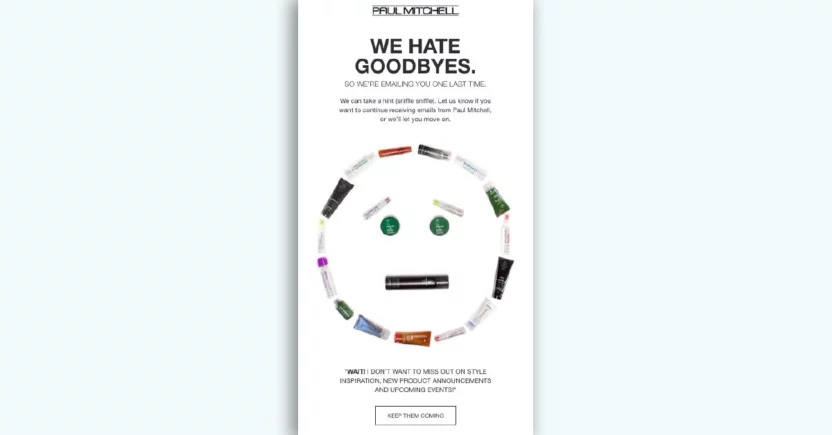
4. FOMO
FOMO, or the fear of missing out, is a potent weapon in any marketer’s arsenal. It is the go-to strategy to create a sense of urgency and to push readers to successfully carry out a task. Women’s apparel brand Loft ran a flash sale that offered 50% off.
This sale was on select items and only on online channels, with free shipping thrown in as a freebie. Such a combination would naturally push the receiver to at least check out the products on sale, if not purchase them, which effectively activates their account!
5. Unsubscribe
Framebridge’s win-back campaign asks customers the most important question – is this the end of the road for them?
Rather than inducing guilt or shame, the brand lets the customers know that it is okay if they are no longer interested in their offering. And finally, it ends on a hopeful note that the customers may stick around and guides them to do so with a powerful CTA.
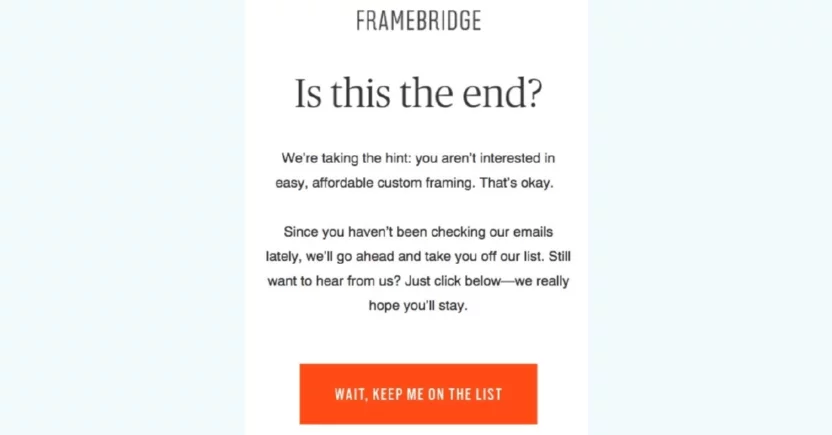
Conclusion
With this, we come to the end of your guide on win-back email campaigns. We hope you now know what constitutes win-back emails and why your business should care about them. You now know about the different win-back emails and how to craft one for your business.
MoEngage has helped major brands like Oyo, Airtel Xstream, and Magenta run successful win-back campaigns that gained impressive results. Read all about it here.






